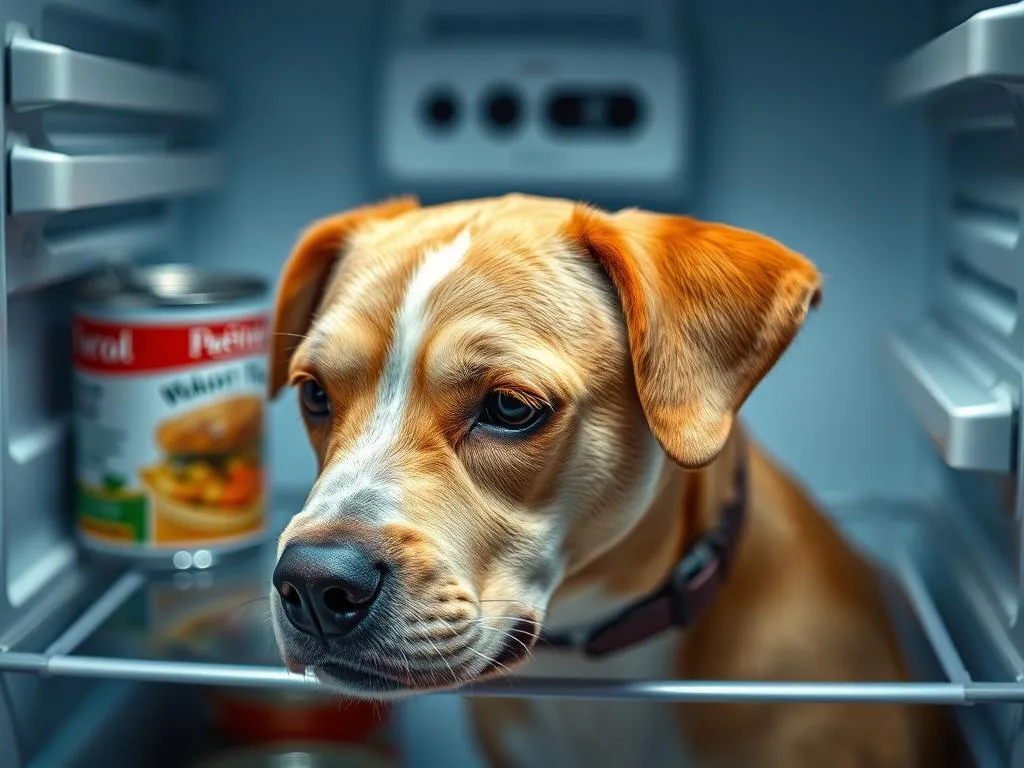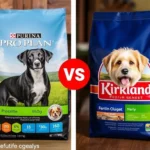
Dog nutrition is a crucial aspect of responsible pet ownership. With the variety of food options available, many dog owners are turning to canned dog food as a convenient and nutritious choice for their furry friends. However, a common question arises: does canned dog food need to be refrigerated? Understanding the answer to this question can help dog owners ensure that their pets receive not only the right nutrition but also safe food.
Understanding Canned Dog Food
What is Canned Dog Food?
Canned dog food, often referred to as wet dog food, is a commercially produced dog food option that comes sealed in a can. This type of food typically has a higher moisture content compared to dry kibble, making it appealing for dogs who may be picky eaters or need extra hydration in their diet. There are various types of canned dog food, including:
- Wet Food: Fully cooked and ready to serve.
- Semi-Moist Food: Contains moisture but isn’t fully cooked.
These variations can cater to different dietary needs and preferences, ensuring that there is an option for every pup.
Nutritional Value
Canned dog food is often formulated to meet specific nutritional standards set by pet food authorities. Common ingredients found in canned dog food include:
- Meat and meat by-products
- Grains and vegetables
- Vitamins and minerals
When comparing the nutritional value of canned dog food to dry dog food, it’s essential to note that canned options generally have higher protein and fat content. However, the calorie density may differ, so reading labels is vital to ensure that you are providing the best diet for your dog.
Storage Guidelines for Canned Dog Food
Unopened Canned Dog Food
Unopened canned dog food can be stored in a cool, dry place, away from direct sunlight. Proper storage conditions help maintain the integrity of the food. Most canned dog foods have a shelf life of 1-3 years, as indicated by the expiration date on the can. Always check this date before purchasing, and ensure that the can is not damaged or bulging, as this could indicate spoilage.
Opened Canned Dog Food
Once a can of dog food is opened, it requires more attention. Here are some recommended methods for storing opened cans:
- Refrigeration: It is generally advised to refrigerate opened canned dog food, especially if you do not plan to use it within a couple of days.
- Airtight Containers: If refrigeration isn’t an option, transferring the contents to an airtight container can help maintain freshness.
Opened canned dog food should be consumed within 3-5 days if refrigerated. If you notice any unusual smells, colors, or textures, it’s best to discard the food.
Benefits of Refrigerating Canned Dog Food
Preservation of Freshness
Refrigeration plays a significant role in preserving the quality and freshness of opened canned dog food. When stored in the fridge, the food retains its taste and texture, making it more appealing for dogs. Many pets prefer the flavor of fresh food, and refrigeration can help ensure that your dog’s meals stay tasty.
Safety Considerations
Another essential reason to refrigerate opened canned dog food is the safety aspect. Bacteria can proliferate in pet food if left at room temperature for prolonged periods. This can lead to spoilage and foodborne illnesses in pets. Keeping the food refrigerated helps mitigate these risks, ensuring that your dog remains healthy and safe from potential health hazards.
Alternatives to Refrigeration
Dog Food Storage Options
If refrigeration isn’t feasible, there are several dog food storage options to consider. Utilizing an airtight container is one of the most effective methods to keep canned dog food fresh. Here are some benefits of using airtight containers:
- Prevents Air Exposure: Reduces oxidation and the growth of bacteria.
- Keeps Food Moisture In: Helps maintain the food’s texture and flavor.
- Protects from Pests: Guards against insects and rodents.
When Refrigeration Isn’t Necessary
In some cases, refrigeration might not be necessary. For example, if you’re using a small portion of canned food daily, it may be fine to leave it out for a short while. Here are some signs to look for to determine if the food is still safe to eat:
- No Unusual Odors: If it smells fresh, it is likely still good.
- Normal Texture and Color: Any significant changes could indicate spoilage.
- Within the Consumption Window: If the opened can has been stored properly and consumed within a few days, it should be safe.
Common Myths and Misconceptions
Myth: All Canned Dog Food Must Be Refrigerated
A prevalent misconception among dog owners is that all canned dog food must be refrigerated. While it is generally recommended for opened cans, not all canned dog food requires refrigeration before opening. Many brands are formulated to be stable at room temperature until opened. Understanding the specific storage needs of your chosen brand can help clarify this myth.
Myth: Refrigerated Food is Always Safer
While refrigeration can enhance food safety, it does not mean that refrigerated food is always safer. Proper food handling practices are equally important. Even refrigerated food can spoil if left too long or if it was not stored correctly. Always follow best practices for food storage, regardless of whether it’s refrigerated.
Conclusion
In summary, proper storage of canned dog food is essential for maintaining your dog’s nutrition and safety. While canned dog food does need to be refrigerated after opening to ensure freshness and prevent spoilage, there are alternatives for storage that can also be effective. Understanding your specific dog food brand’s storage instructions and practicing safe food handling can help keep your pet healthy and happy.
Being mindful of your dog’s nutrition and food safety is crucial for any responsible pet owner. With the right knowledge and practices, you can provide your furry friend with delicious and safe meals that contribute to their overall well-being.









